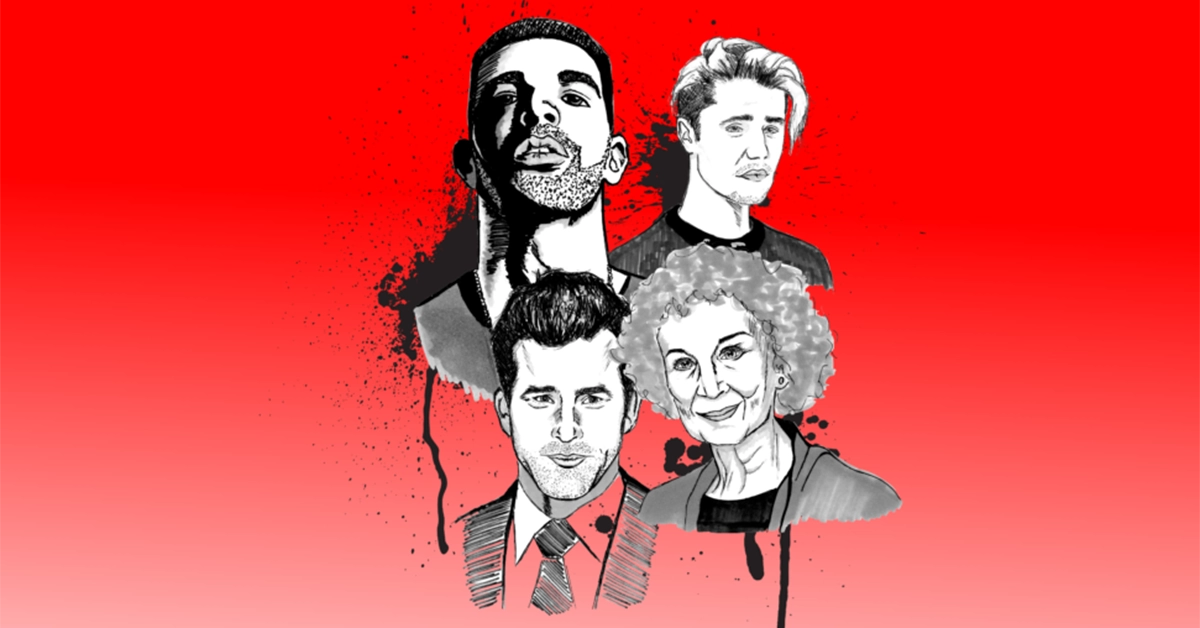Canadian media seems to be flourishing on the global stage. London, Ont.’s Justin Bieber and Toronto’s The Weeknd both made Forbes’ World’s Highest-Paid Celebrities Of 2016 list.
Meanwhile, Canadian authors like Margaret Atwood and Michael Ondaatje have seen critical acclaim around the world, and Canadian writer Alice Munro even won the Nobel Prize in Literature in 2013.
Whether it be music, literature or almost anything else, Canadian media seems to have a sizeable following worldwide. Before one can figure out why Canadian cultural output is popular, though, a question must be raised: what makes content Canadian in the first place?
Dr. Jack Robinson, an English professor at MacEwan University, holds a very broad definition of what makes literature Canadian — to him, any literature with a tangible connection to Canada can fall under the umbrella. He views this generality as a good thing, as it allows for more inclusion in Canada’s national canon.
“I don’t think the definition is all that important, really,” he said.
“Some people might say Canadian literature is defined by certain prominent themes, or some people might say, you know, it’s defined by these themes in contrast with American or British literature, but I think that gets pretty dicey, to say that it’s all about this concept.”
“That, as a definition, would exclude certain Canadian authors, so it’s not good, really, to apply a thematic definition, although some critics have famously done so.”
The CRTC, however, has a narrower definition of Canadian content. Music, for instance, must meet two of the four MAPL criteria.
The criteria, provided by the CRTC, are as follows: the music has to be composed entirely by a Canadian, has to be performed by a Canadian, the live performance has to be recorded in Canada, or the lyrics have to be written entirely by a Canadian.
While the Canadiana embedded in Drake’s Views might be a nice touch, that element does not make it Canadian to the CRTC — Drizzy had to write the whole thing and perform it mostly by himself. (Fun fact: Views overwhelmingly does not meet the first or last MAPL criteria.) We reached out to the CRTC for further comments on Canadian content and its role on the global stage, but they failed to respond in time for publication.
However, Radio-Canada International’s (RCI) web editor-in-chief, Soleïman Mellali, was quick to respond to queries regarding the broadcaster’s successes abroad.
“Currently, on the web, listeners and internet users from the five continents follow and interact with us in the five most-spoken languages in the world: English, French, Spanish, Chinese and Arabic,” he said, adding that historically, RCI has broadcasted in 23 different languages.

Mellali explained that RCI’s origins could be traced to the Second World War, where it was deemed necessary for the Canadian Armed Forces stationed in Europe to have a broadcaster with a Canadian slant available to them. As that war ended and the Cold War began, Mellali said, RCI’s reach spread even further.
Not only has RCI seen success with Canadians abroad, but it has also gained traction with people who have just landed in Canada or who might have never even stepped foot in the country.
“For those who are interested in Canada, those who are discovering it, those who hope to immigrate (to Canada), those who seek refuge here and for those who are arriving in their new host society,” he said.
“(RCI) becomes an anchoring point, an information mine and a formidable tool of integration available in both official languages and in the mother tongues of these thousands of listeners and web users, some of whom have been following us for a great many years.”
In spite of this worldwide interest in Canadian media, Robinson said Canadian academics have neglected the study of Canadian literature. He attributes this “marginalization” in part to the medium’s history.
“I think it’s the lingering colonial mentality,” he said. “We started off as an Anglocentric culture under the shadow of British literature. We are still under that shadow.”
Robinson said this mentality has led Canadian literature to be seen as “inferior” to other national literatures, and post-secondary emphasis on English literature reinforces this notion.
One solution Robinson proposed to promote the appreciation of Canadian literature at home is to teach it more in post-secondary institutions. Another idea he put forward was a focus on quality over quantity.
“When I started studying Canadian literature, there were two questions,” he explained. “The first one was, ‘Is there any of it?’ Well, since (then), it has become abundantly clear that yeah, there is a bunch of it out there. But the second question still remains: ‘Is it any good?’”
“With these questions kind of haunting the study of Canadian literature, I’ve kind of, perhaps in a defensive way, developed the answer, ‘Yes, it is good, and we can demonstrate the quality of some of it if we examine its style closely.’” This focus on style is why Robinson speaks highly of Ondaatje, who is both emphatic on style and popular around the world.
Overall, Robinson’s and Mellali’s words suggest something pointed about Canadian media: people worldwide consume it, because people worldwide believe it is, as a whole, good content.
“If you do work of quality,” Robinson said, “then the world will pay attention to it.”
Cover illustration by Alley MacLean.





0 Comments